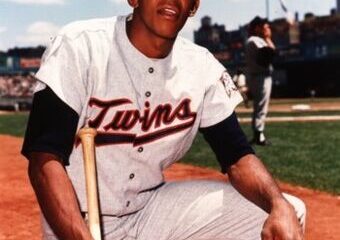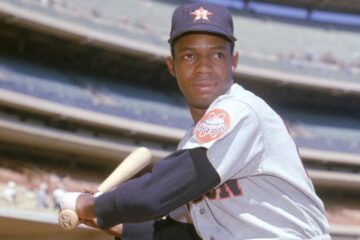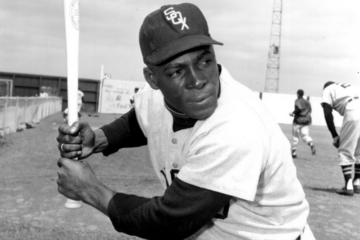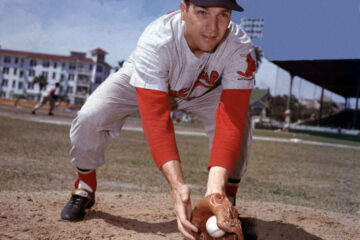Hall of Fame Index: Miguel Cabrera
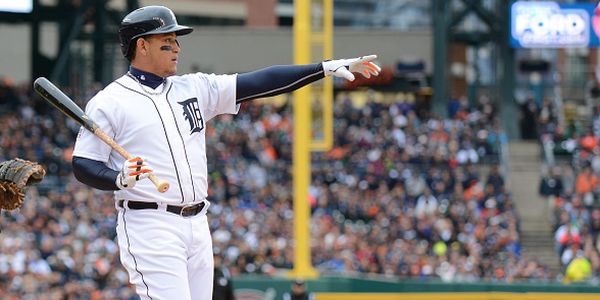
As we move through the diamond (in reverse) we come to find some commonalities between players that should not have been put in the Hall of Fame. The Hall of Fame Index is similar to other systems in that it attempts to distill the effects of time and place. One of the pitfalls of looking at traditional numbers is that many of them are what could be referred to as opportunity statistics. Runs and RBI depend on teammates getting on base before you or driving you in from base. Hits are a function of opportunity as well if you can get into the lineup often enough.
The index depends on wins above replacement player. Certainly, everything that goes into producing runs also goes into WAR, but it helps us distill out players that no longer have a positive impact on their team winning games. The replacement level player is determined as the typical AAA regular at that position. There are countless examples of legendary players who became replacement level performers late in their career. Yet, their teams allowed them to play regularly because they were popular players that had sway with the organization and fans.
When evaluating an active player, it can be difficult to determine where their career arc will go. We often assume our heroes will always be good and will always be productive players. Unfortunately, Father Time is still undefeated. Miguel Cabrera is still in his prime, but you can see he’s closer to the end than he is to the beginning. He may fall off a cliff next year or three years from now. No one knows for sure. Has he done enough to get in already?
Career Value
| BR | BP | FG | Total | |
| Lou Gehrig | 112.4 | 114.4 | 116.3 | 343.1 |
| Jimmie Foxx | 96.4 | 99.1 | 101.8 | 297.3 |
| Frank Thomas | 73.7 | 73.1 | 72.0 | 218.8 |
| Eddie Murray | 68.3 | 65.1 | 72.0 | 205.4 |
| Willie McCovey | 64.4 | 62.3 | 67.4 | 194.1 |
| Harmon Killebrew | 60.3 | 65.0 | 66.1 | 191.4 |
| Hank Greenberg | 57.5 | 59.3 | 61.1 | 177.9 |
| Bill Terry | 54.2 | 55.6 | 57.0 | 166.8 |
| Tony Perez | 53.9 | 47.7 | 58.9 | 160.5 |
| George Sisler | 54.5 | 53.2 | 51.9 | 159.6 |
| Miguel Cabrera | 67.0 | 66.1 | 64.9 | 198.0 |
Cabrera reached 1500 RBI faster than any player in history. Like we said before, counting numbers do not make a Hall of Fame resume. Most of those RBI came in the so-called steroid era. What is probably more important for Cabrera is the peak performance he brought during his prime. He became the first player since Carl Yastrzemski to win the triple crown (2012). He won back to back MVP awards in 2011 and 2012 and is the owner of four batting titles in addition to leading the big leagues in oWAR four years in a row.
True Hall of Fame fitness combines longevity and top peak performance. This is the main reason why we have a career value and peak value component. There have been a number of players in history that have managed to put together four year stretches where they look like Hall of Famers. The difference between Cabrera and the rest is that he has managed to put together a decade’s worth of all-star level performance.
Peak Value
| BR10 | BP10 | FG10 | Total | |
| Lou Gehrig | 90.1 | 91.4 | 92.7 | 274.2 |
| Jimmie Foxx | 73.7 | 75.7 | 77.7 | 227.1 |
| Frank Thomas | 56.2 | 55.7 | 57.3 | 169.2 |
| Hank Greenberg | 51.5 | 49.0 | 55.1 | 159.9 |
| Bill Terry | 50.4 | 51.6 | 52.8 | 154.8 |
| George Sisler | 50.7 | 49.9 | 49.0 | 149.6 |
| Willie McCovey | 49.3 | 49.3 | 49.6 | 148.2 |
| Harmon Killebrew | 45.8 | 49.0 | 49.0 | 143.8 |
| Eddie Murray | 46.4 | 47.6 | 49.3 | 143.3 |
| Tony Perez | 44.6 | 40.0 | 48.1 | 132.7 |
| Miguel Cabrera | 55.4 | 52.9 | 54.7 | 163.0 |
So, according to the index, Cabrera is roughly the fourth best peak value performer since the beginning of the 20th century (actually sixth best when you add in Jeff Bagwell and Albert Pujols). His Hall of Fame credentials are fairly obvious and he really doesn’t have to do anything else. Considering that his prime probably ended in 2014, there is nothing he can add to his peak value to move up the chart either.
When Cabrera won the triple crown in 2012 it sparked a great debate in the industry. It’s hard to argue against that kind of production and that production helped the Tigers get to the playoffs. Yet, according to advanced metrics, Mike Trout was the superior player. One can’t help but see that as a microcosm of some of the issues that plague the Hall of Fame voting process. Trout was more valuable because he got on base more often, did more damage when he got on base, and was much more valuable with the glove. There’s no denying Cabrera’s value overall and yet that season stands as a great example that some value is hidden. WAR was designed to capture that value.
The Hall of Fame Index
| Career | Peak | Total | |
| Lou Gehrig | 343.1 | 274.2 | 617.3 |
| Jimmie Foxx | 297.3 | 227.1 | 524.4 |
| Frank Thomas | 218.8 | 169.2 | 388.0 |
| Eddie Murray | 205.4 | 143.3 | 348.7 |
| Willie McCovey | 194.1 | 148.2 | 342.3 |
| Hank Greenberg | 177.9 | 159.9 | 337.8 |
| Harmon Killebrew | 191.4 | 143.8 | 335.2 |
| Bill Terry | 166.8 | 154.8 | 321.6 |
| George Sisler | 159.6 | 149.6 | 309.2 |
| Tony Perez | 160.5 | 132.7 | 293.2 |
| Miguel Cabrera | 198.0 | 163.0 | 361.0 |
The primary drama remaining on Cabrera is whether he will be productive enough to surpass Thomas in the index. He trails him by 27 wins, but we have to remember these come in multiples of three because we use three different sources. Nine wins doesn’t seem like much, but it will probably require him to play three or four more productive seasons. Seems easy enough, but he has shown that he will likely be more injury prone as he gets older. If he passes Thomas he eases into the top five all-time.


